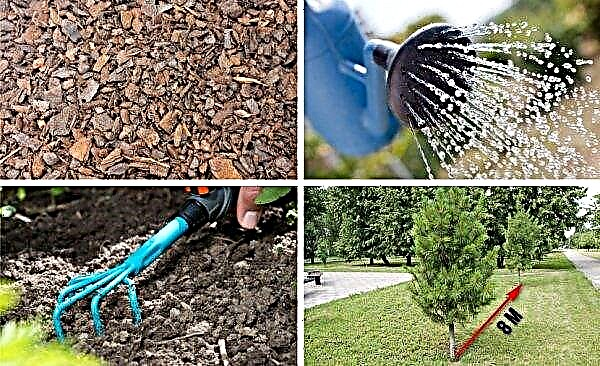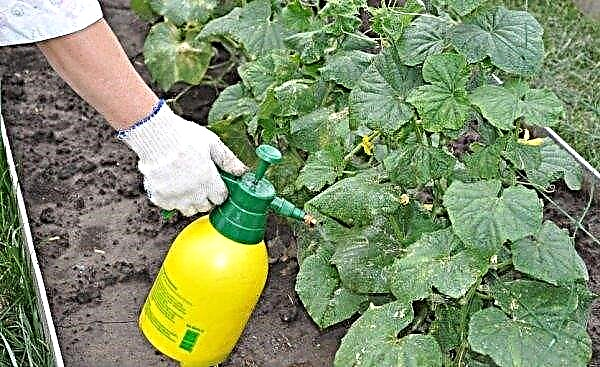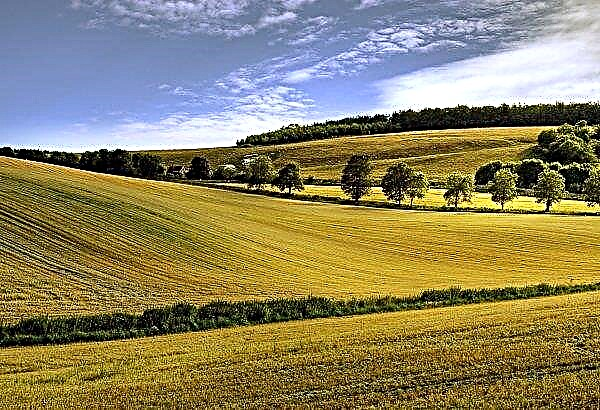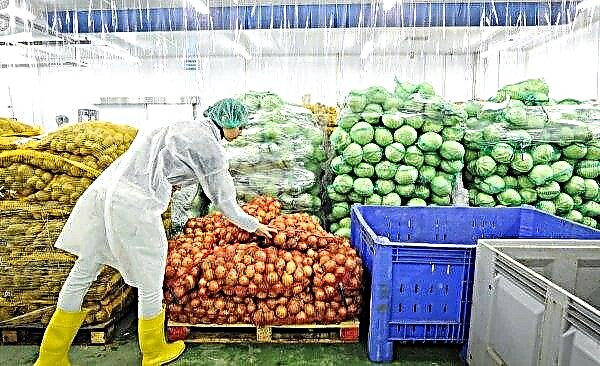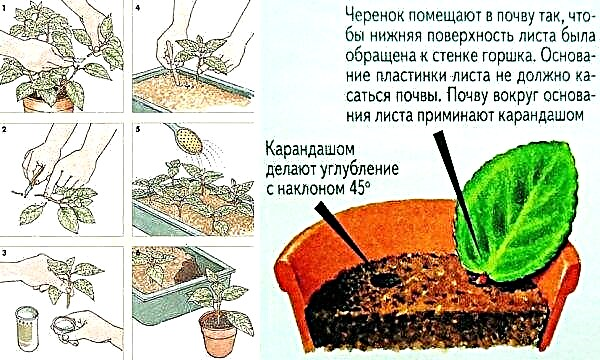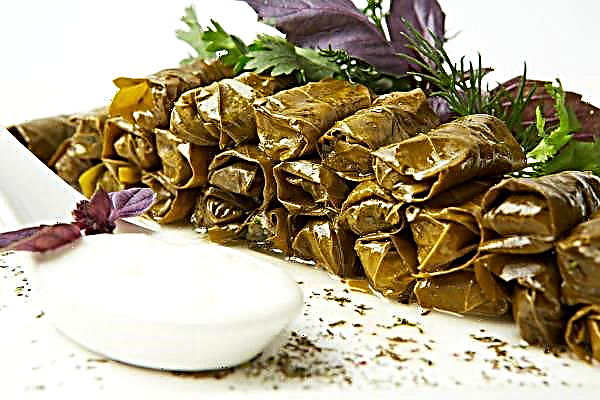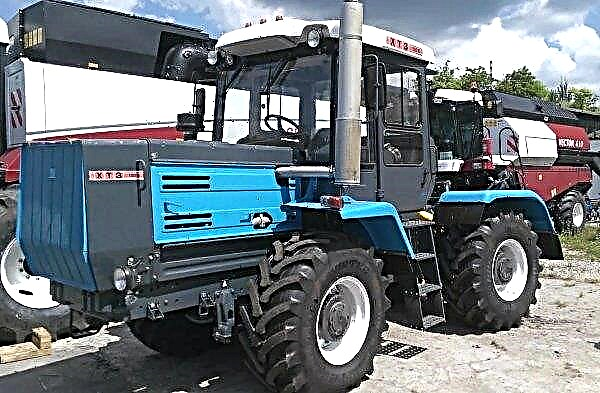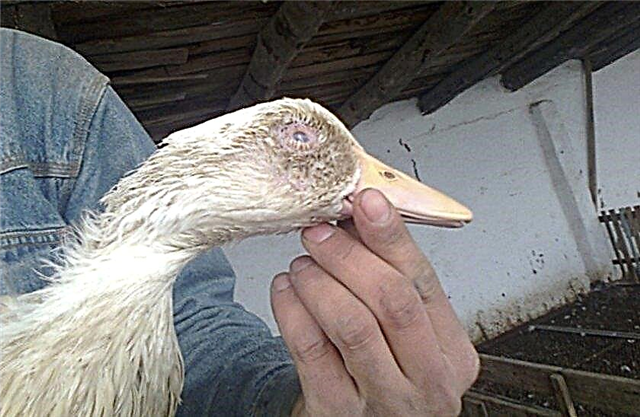Potatoes are called second bread, and the requirements for cultivars are quite high. One of the varieties is very popular both among summer residents and among farmers. It's about Scarlet.
Description and characteristics of the variety
The correct and full name of the variety is Red Scarlet. Potato was obtained through the efforts of Dutch breeders; it was widely distributed, in particular, in our latitudes, in the early 2000s.

Table early ripening variety ripens 75 days after planting. A low bush is formed by upright shoots of medium thickness, on which medium-sized foliage is also formed by a dense green mass.
During flowering, a pure variety forms red or purple flowers. As quickly as the tops, Scarlet is growing tubers. The weight of one tuber varies from 70 g to 150 g.
The prefix "red", that is, red in translation from English, received potatoes due to the color of the peel. A red-pink or pink-colored fruit of a rounded oval shape has shallow eyes. The variety bears fruit well: on average 500 kg / ha, the flat surface of the potato retains its presentation for a long time.
Yellow flesh of a homogeneous structure, fine-grained. A distinctive feature is that it does not darken at the cut. The high starch content does not allow potatoes to be cooked during cooking or frying. The taste is moderately sweet.
Did you know? The popular Karlsson’s vodka in Sweden is made from potatoes and bears the name of the creator of the equally popular strong drink Absolute.
The superiority and disadvantages of the potato variety
The main advantage of the variety is considered to be resistance to one of the most dangerous pests of solanaceous crops - the golden nematode.
- Other advantages:
- early ripening;
- resistance to drought (short-term);
- high productivity;
- immunity to major viruses and late blight;
- taste characteristics;
- long shelf life;
- transportability.
Among the shortcomings of the variety, there is a demand for soil and weather conditions. Red Scarlet is equally resistant to heat and frost.
Potatoes are distinguished by a large number of nutrients in the composition.
The fruits contain:
Find out also

a) minerals:
- iron;
- calcium;
- potassium;
- magnesium;
- phosphorus;
b) vitamins:
- B9 - folic acid;
- E is tocopherol;
- PP - nicotinic acid;
c) organic acids:
- Apple
- oxalic;
- lemon.
Thanks to this composition, regular use of the product will help normalize the functioning of the cardiovascular and digestive systems. Improve the water-salt balance in the body and speed up metabolic processes.
A dish of baked potatoes helps to restore the mucous membrane with a stomach ulcer and duodenal ulcer. Lotions that heal wounds are made from potato juice, and also taken orally to relieve migraine pains. Juice helps with constipation and chronic fatigue.
Planting and cultivating Scarlet
Planting a heat-loving variety is carried out when the earth warms up to at least + 10 ° C (April, May). In this case, there is excellent rooting and friendly germination of crops.
Preparation and selection of planting material
Without your own seed material, you can purchase it in specialized stores. To verify the purity of the variety, you have to wait for flowering: the appearance of white flowers will be a signal to the over-sorting. Such bushes are best marked for yourself to cull for the next planting.
Self-prepared seeds need to be calibrated: the optimal seed size is 4–5 cm in diameter. Then the seeds are dried for about 10 days, during which time the tubers are greened. Tubers are stored in a dry cellar until spring. 45 days before planting, the seeds are removed from the store, washed, discarded damaged. Preparing for planting involves disinfecting and germinating.
Stages of the procedure:
- Tubers are pickled in a solution of boric acid 10 g / 1 l of water.
- After drying the material, it is heated for 3-4 days at a temperature of + 18 ... + 20 ° С.
- Then placed for 30–35 days for germination in the light at room temperature. If there is not enough sunlight, use lamps.
- The next step is wet germination. Tubers are laid out in boxes and covered with wet sawdust.
- Sawdust moisturize by placing in a solution of water and fertilizer. The drug "Baikal-M" is diluted in a proportion of 10 ml / 10 l of water. Sawdust needs to be wrung out, then evenly distribute on tubers.
- Boxes are placed in a temperature regime not lower than + 12 ° С.
- The covering layer is regularly moistened by spraying.
- After 4–5 days, viable sprouts appear and the tubers are ready for planting.
Important! The combination of two methods of germination - wet and in the light will give 100% germination result.
Preparation of soil for planting
For landing, it is recommended to choose a site on a hill, well-lit and warmed by the sun. To grow a crop, loose soil with an acidity index of 5.5–7 pH is needed. In the fall, the earth is dug up to the depth of the bayonet, removing weeds and fertilizing.
To saturate the soil, use for each m²:
- rotted manure - 7 kg;
- superphosphate - 40 g;
- potassium sulfate - 15 g.
Planting Technology Varieties
Before planting, the site is again dug up into a half bayonet shovel and leveled with a rake.
Landing pattern:
- The site is divided into rows, leaving a distance of 120 cm between them.
- The holes are dug at a distance of 60 cm from each other, with a depth of 7-10 cm.
- In each hole put 50 g of wood ash.
- Seeds are laid with their eyes up and sprinkled with soil.
Features of care after planting
The first watering is carried out after emergence. Watered under the root with water protected in the sun for 3-4 liters per bush. Before the flowering period, watering is carried out once every 7 days. When peduncles appear, the amount of water, as well as the frequency of irrigation, is increased: 8–10 l under the bush, twice a week.
At the end of flowering, tubers begin to grow actively, so the water norm doubles. As soon as the tops show signs of wilting, the rate is reduced to 3 l, the frequency - up to once every 10 days.Important! To moisturize the soil evenly, a portion of the water is divided. Half is poured and wait until absorbed, then the rest is poured.
After each irrigation, the soil is loosened so that a crust does not form on the surface, preventing the access of oxygen to the tubers. At the same time, weeds are removed. During the appearance of the first seedlings, the first hilling is carried out, almost falling asleep seedlings. Before flowering, the procedure is carried out 2 more times with an interval of 7-10 days. During flowering, manipulation is not carried out, during this period, the tops of the leaves have grown dense foliage. Hilling can damage the bush or increase the risk of fungal infection.
Before flowering, the procedure is carried out 2 more times with an interval of 7-10 days. During flowering, manipulation is not carried out, during this period, the tops of the leaves have grown dense foliage. Hilling can damage the bush or increase the risk of fungal infection.
The first top dressing is carried out 2 weeks after emergence.
Apply the foliar method with a solution:
- carbamide - 100 g;
- potassium monophosphate - 150 g;
- boric acid - 5 g.
 The mixture of substances is dissolved in 5 l of water, then bringing the volume to 10 l, the solution is enough for a plot of 10 m². Repeat the procedure after 3 weeks.
The mixture of substances is dissolved in 5 l of water, then bringing the volume to 10 l, the solution is enough for a plot of 10 m². Repeat the procedure after 3 weeks.During budding, a second top dressing is performed:
- ammonium nitrate - 2 g;
- potassium chloride - 2 g;
- superphosphate - 20 g.
Characteristic diseases and pests
The variety is resistant to major diseases of potatoes, increase its protective properties by treating seeds with boric acid. For protection at different stages of development, the culture is treated with the preparation "Thanos" by spraying 4 g / 10 l of water. In total, 4 procedures can be performed. The drug is effective against late blight, alternariosis and scab.
Potato can attack Colorado potato beetle and bear. To prevent the appearance of a beetle, you can use plantings in the aisles of repellent plants:
- tansy;
- calendula
- wormwood.
Did you know? Israeli scientists from the Hebrew University of Jerusalem in search of cheap electricity received it from a battery based on boiled potatoes.
Harvest dates and storage features
For eating, potatoes are dug up at the end of August, the collection of seed material is carried out at the beginning of the month. 10-12 days before harvesting, the tops are cut, which helps to strengthen the skin and quick ripening.
After harvesting, the potatoes must be dried so that the soil remaining on the tubers crumbles. The best option for drying is under a canopy for 2-3 days. Vegetables are periodically turned over to dry evenly.
After drying, the crop is quarantined for about 2-3 weeks at a temperature of + 14 ... + 16 ° C. During this time, possible diseases will appear. Healthy tubers are stored in a dry cellar on a sand cover in bulk or in boxes.
Reviews about the variety are mostly positive: they note a pleasant taste, resistance to drought and disease. Potatoes do not require a lot of attention, and the yield gives consistently high.

